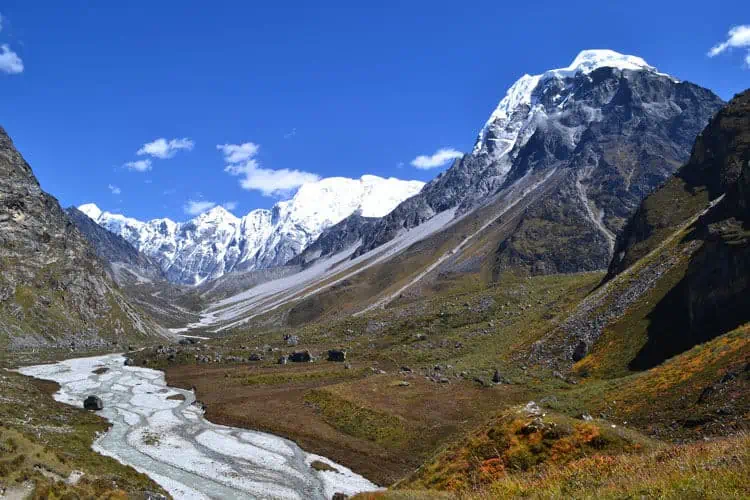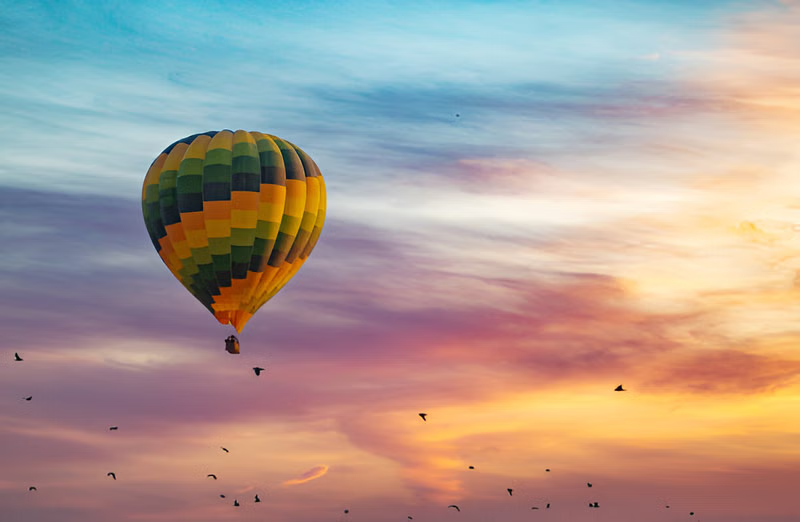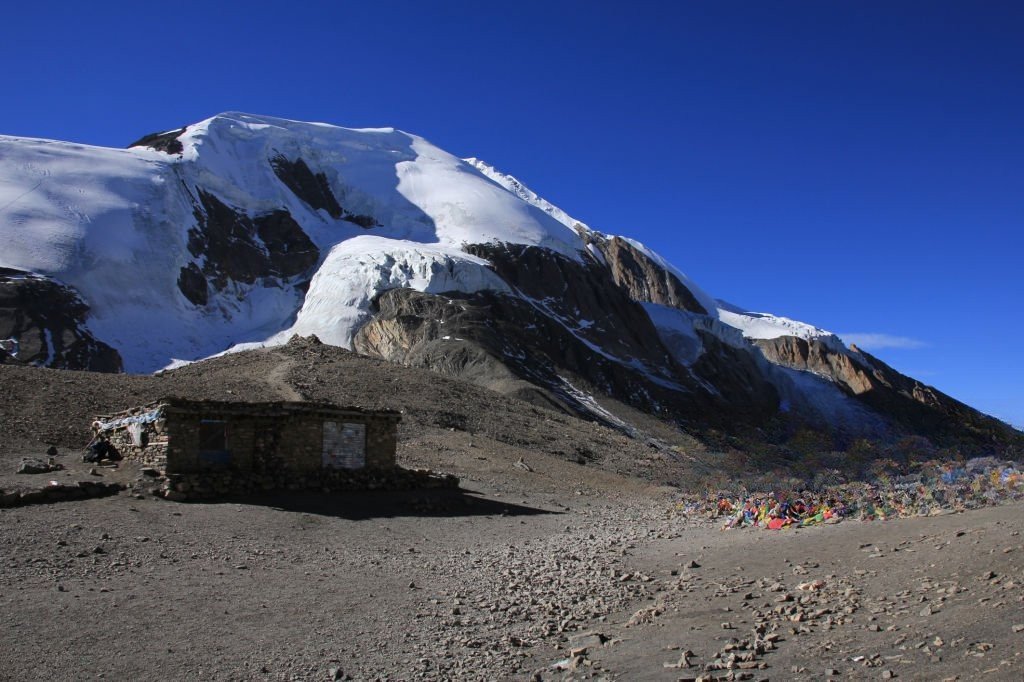Only 50 kilometers north of Kathmandu, close to the border between Tibet and Nepal, is the Langtang region. The closest national park to Kathmandu’s city is Langtang National Park, which is located in this region. The Nuwakot, Rasuwa, and Sindhupalchok districts are included in this 1710 sq. km national park, which is home to about 4,500 people.
At 7,245 meters, the Langtang Lirung is the highest point in the Langtang National Park. In 1978, a Japanese team made the first ascent of Langtang Lirung.
The Langtang region has three primary trekking routes: Helambu, Gosainkunda Lake, and Langtang Valley. With the exception of the Helambu Trek, which begins at Sundarijal and concludes at Sermanthang, all of these treks’ trekking pathways begin at Sybrubesi and terminate at Sundarijal.
Langtang Region
The Langtang National Park was created by royal proclamation in 1970 and spans multiple climate zones, from subtropical to alpine. This park has forests covering around 25% of its area, with oak, maple, pine, and rhododendron trees. Here you will find a plethora of wild animals, including the Himalayan black bear, Himalayan tahr, red panda, yak, and about 250 species of birds.
The lakes in this park are called Gosainkunda, and they are revered by Hindus. These lakes stay frozen from October until June, a period of six months. Hindus hold that Lord Shiva and his spouse Gauri reside at Gosainkunda. At 4,300 meters is the major Gosainkunda lake.
In a same vein, this area is home to Kyanjin Gompa, a significant Buddhist monastery.
Melamchighyang and Langtang Valley trek are two places where people can learn about local culture. Nestled at the foot of Mt. Langtang Lirung, surrounded by multiple snow-capped peaks, is the vibrant village of Langtang, home to tea houses and shops.
Trekkers frequently traverse Lauribina La Pass, which sits between the Langtang region and the Helambu valley. In the upper Langtang area, there’s another treacherous Ganja La Pass.
Langtang Region Highlights
See the valley of glaciers, verdant meadows, pine woods, rhododendron blooms, and tiered fields by traveling to Langtang.
Gorgeous vistas of deep gorges, waterfalls, snow-capped mountains, stone-driven mills, and suspension bridges
Glaciers Kim Sung and Lirung are stunning.
Kyanjin Gompa is home to a nearby cheese manufacturing.
The breathtaking vistas of Kimsung (6,781m), Yansa Tsenji (6,575m), Dorje Lakpa (6,966m), Naya Kanga (5,846m), Langtang Lirung (7,345m), and Gang Chenpo (6,388m)
Tibet-Nepal border area
Prayer flags, chortens, and old Buddhist monasteries, such as Kyangin Monastery
The revered Lake Gosainkunda (4,600m)
Viewpoints of Kyanjin Ri (4,773m) and Tsergo/Cherko Ri (4,984m)
Gorgeous vistas from 5,122-meter Ganja La Pass
Animals such as bears, langurs, musk deer, snow leopards, and red pandas
Best time for Langtang region treks
The season of the walk is important to take into account because it affects the difficulty, scenery, and overall experience of the trek, just like it does with most other high mountain treks. This is a brief monthly summary of the climate at the highest altitudes for trekking.
The coldest months, January and February, are marked by considerable snowfall at high elevations. Though challenging, treks will reward you with breathtaking views of snow-capped peaks.
March and April see a rise in temperature as the winter snow melts. These are some of the greatest months to travel in the Langtang region because of the clear skies and temperate temperatures.
May and June are also good months to trek in the Langtang region. In Nepal, the monsoon season begins at the end of June. To avoid the rain, trek in May or early June.
The months of July and August see the height of the monsoon. The vistas may be obstructed by cloudy sky, and the pathways become slick. However, you can still walk during these months if you enjoy seeing waterfalls, rushing rivers, and lots of rainbows.
The best months to go trekking in the Langtang region are September and October. The summer heat begins to cool off, the skies clear, and there is no chance of rain—all the elements of an ideal trekking season.
November marks the beginning of winter, which lasts until December.
Trekking Grade
Because the treks in the Langtang are mild, you shouldn’t be too concerned about altitude sickness unless you want to include a visit to Ganja La Pass (5,122m). There will be multiple steep ups and downs on the trails you will be walking. Trekking can take you through numerous deep forests and deserted areas.
Possible treks
- Eight-day Langtang Trek
This Langtang Trek is traditional. The trekking routes begin at Syabrubesi, travel north to Kyanjin Gompa, and then loop back along the same route. You will be taking in the surroundings of Kyanjin Gompa.2. The 11-day Langtang Valley Ganja La Pass Trek
An even more difficult walk begins at Syabrubesi and travels north to Kyanjin Gompa, then crosses Ganja La Pass (5,122m) to enter Tarke Ghyang and Sermanthang in the Helambu region before arriving at Melamchi Pul Bazaar. - 3.The 13-day Langtang Gosainkunda Trek
For those who wish to visit the holy Gosainkunda lake, there is a lengthier journey in the Langtang area. This journey begins in Syabrubesi once more, travels north to Kyanjin Gompa, then returns by the same route to Bamboo. From there, it continues eastward, passing Gosainkunda and Laurebina Pass (4,610 meters), before coming to an end at Sundarijal.
4. The 5-Day Helambu Trek
A quick and simple hike in the Helambu Valley is called the Helambu Trek. At Lauribina La Pass in Langtang National Park, the Helambu area begins. Starting in Sundarijal, this journey concludes at Sermanthang.
Preparing yourself
Trekking in the Langtang is not too strenuous. You will, however, appreciate your walk more if you are in better shape. Thus, a few weeks before to your excursion, it’s a wonderful idea to engage in stamina-building activities like swimming, cycling, or jogging. You can hike for five to seven hours with a light backpack if you’d want to have a taste of what such excursions are like beforehand.
Prior trekking experience is not necessary, however it is a plus. This trek can be finished by someone in average fitness.
However, please see your doctor before scheduling the walk if you have any sensitive medical issues, such as blood, heart, or lung disease.
Since you will be traveling to some of the most breathtaking and distinctive places on earth, we strongly suggest packing a decent camera. You can, of course, use the camera on your phone or tablet, but the quality may not be sufficient.
In the same way, even though you’ll be trekking most of the day, you’ll have lots of spare time in the evening. So make a plan in advance. You can bring game accessories like cards, monopoly, or chess, or you can take some decent books to read. The majority of foreigners spend their leisure time acquiring Nepali vocabulary.
Insurance
Altitude sickness, injuries, and other dangers are inherent in high altitude trekking. Hence, there is still a slight possibility of risk associated with Langtang hikes. Therefore, having enough trek insurance is essential. Your insurance must pay for helicopter rescue and repatriation up to the highest hike altitude in addition to treatment expenses.
The hike regions lack proper treatment centers and a developed road network, necessitating helicopter rescue. Thus, in case of an emergency, we will make use of your insurance to set up a prompt helicopter rescue.
Make sure the insurance provider knows whether helicopter rescue is covered under their policy by giving them a call before purchasing an insurance coverage. It’s not enough to trust what insurance companies say on their websites.
You can get in touch with us if you need assistance selecting an insurance company. We are able to suggest insurance providers based on the experiences of our prior customers. Please be aware, nevertheless, that we do not offer insurance plans for sale.
Luggage
Traveling light is usually a smart idea, but don’t forget to pack clothes, accessories, and equipment based on the time of year, distance traveled, and destination.
We designate one porter for every two trekkers; however, the maximum weight of luggage that a porter may carry is 18 kg. The maximum weight for your luggage is 9 kilograms. If necessary, we may, however, set up a single porter just for you. Please remember to bring clothes, toiletries, personal accessories, and necessary equipment.
We also anticipate that you will be carrying a small backpack containing your essential papers and valuables. You can store your excess luggage for free at the Discovery World Trekking store for the length of your climb.
Spending money
Even though the majority of the expenses associated with the trek are covered by our packages, you will still need to budget for additional spending on things like lodging and meals in Kathmandu, buying an insurance policy, getting a visa, and purchasing drinks, snacks, souvenirs, tips, gear, and other items. Since everyone’s tastes are different and there are hotels and lodges in Kathmandu to suit every budget, we do not include lodging.
The currency of Nepal is the Nepali Rupee (NPR). One US dollar is roughly equal to 120 NPR.
You can enter Nepal with three different methods of payment: cash, travelers’ checks, and credit/debit cards.
Make sure the insurance provider knows whether helicopter rescue is covered under their policy by giving them a call before purchasing an insurance coverage. It’s not enough to trust what insurance companies say on their websites.
You can get in touch with us if you need assistance selecting an insurance company. We are able to suggest insurance providers based on the experiences of our prior customers. Please be aware, nevertheless, that we do not offer insurance plans for sale.
Trekking regions do not have currency exchanges, and the only currency accepted in their markets is Nepalese. So, based on your projected spending, you will need to change your money in Kathmandu. We advise you to budget between $10 and $20 every hike day.
Visa
To enter Nepal, all nationals—aside from Indians—need a visa.
At immigration checkpoints along the borders between Nepal and Tibet and India and Nepal, most nationalities can obtain an on-arrival visa at Tribhuvan International Airport.
To apply for an on-arrival visa, you will need to provide an application fee, a passport-size photo, and proof of at least six months of validity in your passport. You can pay in cash for the USD 50 that is currently required for a 30-day stay. Children under 10 receive free visas (US citizens excepted).
Visas are free for citizens of China and SAARC (Bhutan, Bangladesh, Pakistan, Maldives, Sri Lanka). Free visas, however, are limited to 30 days per year for citizens of SAARC.
Ethiopian, Iraqi, Palestinian, Nigerian, Ghanaian, Zimbabwean, Swazilan, Cameroonian, Somalian, Liberian, and Afghani citizens should get in touch with the local Nepali embassy since they might not be granted an on-arrival visa.
For up-to-date information, please visit https://www.immigration.gov.np/ as visa restrictions are subject to change without notice.
Getting there
Please email us the details of your flight as soon as you reserve your trek with us so that we can meet you at Tribhuvan International Airport (TIA).
We will pick you up at the TIA and drive you in a private car to your hotel. We provide complimentary airport transportation for each and every one of our visitors who books a Langtang trekking tour.
Kindly arrive in Kathmandu no later than 3 pm, ideally one day prior to the start of your climb. It gives us time to tell you about your journey and double-check that you have brought everything you need for the hike in your luggage.
On the day of your Langtang trek departure, you will travel to Syabrubesi from Kathmandu via public bus. You can rent a Jeep to get to Syabrubesi for an additional fee. On the other hand, we will travel to Sundarijal for the Helambu hike.





